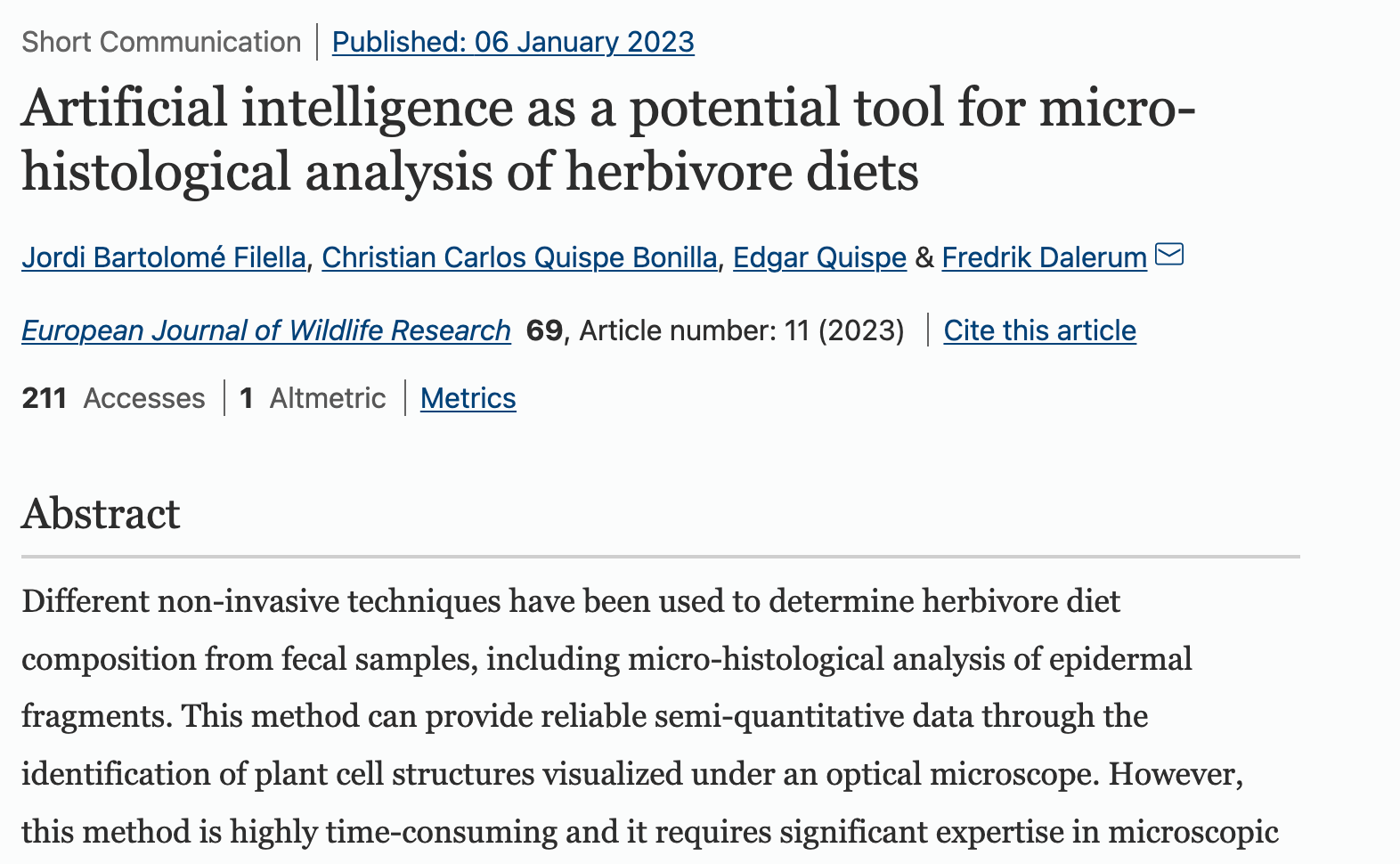
ABSTRACT
Diferent non-invasive techniques have been used to determine herbivore diet composition from fecal samples, including micro-histological analysis of epidermal fragments. This method can provide reliable semi-quantitative data through the identifcation of plant cell structures visualized under an optical microscope. However, this method is highly time consuming and it requires signifcant expertise in microscopic identifcation. Since micro-histological analysis is based on pattern recognition, artifcial intelligence (AI) could be used to make this method more time efcient through automated identification and counting of epidermal fragments. We developed a software application based on an AI model that, appropriately trained, could identify and count epidermal fragments from photographed microscope slides. We compared
the performance of this model to that of visual identifcation by a trained observer using in vitro mixtures of fragments from two plant species, Arbutus unedo and Rubia peregrina, with very diferent epidermal characteristics. Both the human observer and the AI model estimated proportions of plant fragments very close to those of the original mixtures. In addition, once trained, the AI model was over 350 times faster in identifying and counting fragments compared to a human observer. Our study highlights the potential of AI to be applied to the study of herbivore diets for labor-intensive pattern recognition tasks.
Keywords: Machine learning · Deep learning · Epidermal fragments · Fecal samples · Microscope slides · Cuticle analysis.
DOI: https://doi.org/10.1007/s10344-022-01640-4
